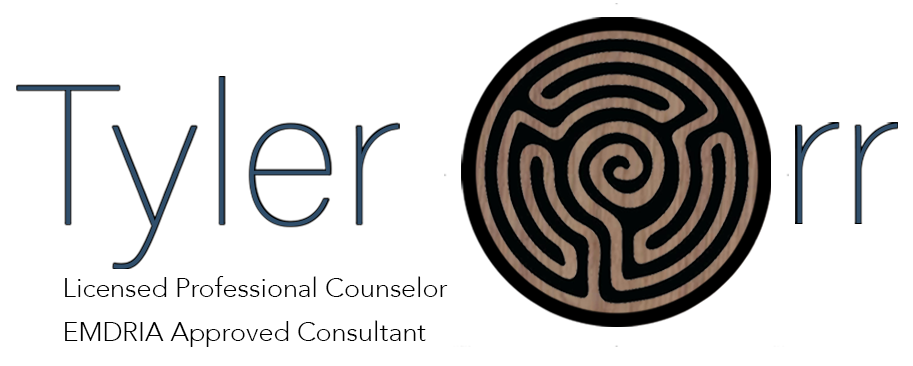Day Seven: Being Mindful of Thoughts
To recap, an emotion is a combination of a sensation and thought. We’ve spent the last three days mindfully observing the body. Today we will conclude our time together by bringing mindful observation to the other half of your emotional experience—your mind.
What do you think a thought is? Maybe that seems like an odd question, but have you ever been asked that before? If not, isn’t it weird that you haven’t? Our thoughts dominate so much of our lives. It would seem like common sense to understand more about what they are. As you will likely see in today’s experiential exercises, thoughts are strange things. They appear to be concrete and tangible, but when you look directly at them, they often become transparent and insubstantial.
I prefer to teach somatic awareness before moving to cognitive awareness simply because that’s the order of things in your nervous system. Your body brings in information from your environment (both external and internal), and sends that information up the spinal cord, into the brain. The lower, more primitive regions of your brain then process this information and bring it all together into an experience that can be perceived. This is where my dog Marty’s nervous system ends. We humans, on the other hand, have adapted a newer, more advanced part to our brains that Marty does not have—a cerebral cortex. This is where we have conscious thought. This is where mental words, sounds, and pictures are added to the moment.
Your cerebral cortex begins around your eyebrows and goes up to the top of your head. Like you did with the body scan, scan through your body from head to toe. Notice how much more there is of you from your eyebrows down. This reveals how your conscious mind pales in comparison to the rest of your experience. The present experience that is taking place in your body is physically bigger and occurring first. The mind that adds to the experience is smaller and happens secondary. Yet so many believe the illusion that thoughts are all there is.
Now, I’m by no means saying that thoughts are bad. There is no problem with thoughts. The problems only arise when thoughts are believed and allowed to do as they please. Remember from previous lessons, thoughts are an indirect experience of the moment. You can think about a cheeseburger, but that doesn’t mean you’ve eaten one. Likewise, you can think about life, but that doesn’t mean you are living and experiencing it.
Even though a thought is an indirect experience, you can still experience it directly by observing it just like you’ve been doing with your senses. On day one, you learned about the power of observation. If you want to change a thought, don’t try to change it. Just observe it and allow space for the observation to bring the change you desire. Today we will learn to do just that, and by doing so, it’s my hope that you will see thoughts more clearly for what they are: just thoughts.
I’m continually amazed by how serious people take their thoughts. But why believe what comes to mind? What makes a thought true? What validity does a thought have? Where is its certificate of authenticity? These are the types of questions we will ask in today’s experiential exercise called “song stuck in your head”. The video is intended to teach you to directly observe a thought in exactly the same way you’ve been observing sensations in your body. Instead of focusing on the content of the thought stream, we will look directly at your thoughts. In other words, we won’t focus so much on what you’re thinking. Rather, we will explore the question, “What is this thing I know to be a thought?” When you observe your thoughts this way, they tend to lose their power. They become less believable, and as a result your awareness can rest more fully in your body, making it much harder for the mind to perpetuate an emotional cycle.
The second video is called “hand sensation exercise.” It demonstrates how the mind adds to the moment after the fact, and how thoughts actually add very little to the experience itself.
Conclusion
I sincerely hope you’ve enjoyed One Week of Mindfulness. It’s been a pleasure to prepare it for you. Please know that all the videos, audio, and information in the text are yours forever. I encourage you to checkout the blogs and videos on my website (tylerorr.com), as well as future newsletters. So much of that material is intended to support and advance what you’ve learned this week.
I’ve said for years that I can’t find an area of my life that mindfulness hasn’t made better. I can say with complete honesty that nothing has made a bigger impact on how I perceive my experience. In fact, it’s accurate to say that I can now perceive my experience thanks to mindfulness. Without it, I would still be lost in my thoughts, and caught up in a continual cycle of emotion. I’m incredibly thankful to all who have guided me along the way and taught me to directly observe the moment. My intention for this training is to pay it forward and my hope is that mindfulness will be just as impactful to you.
